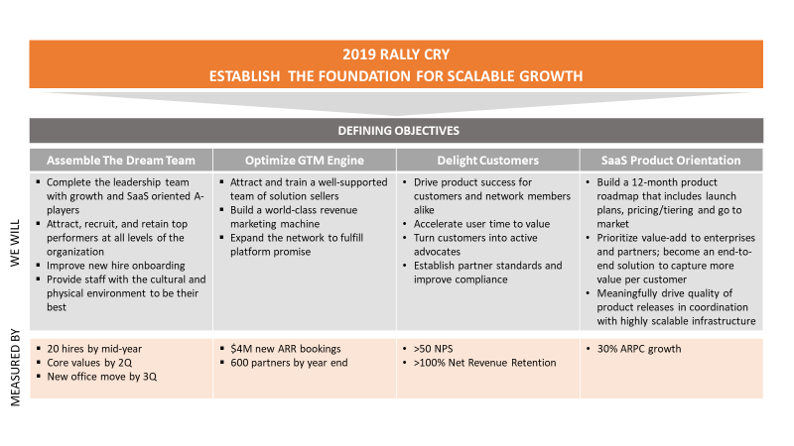What Does Aop Stand For In Finance?
As the world of finance continues to evolve, new terminologies and acronyms are constantly being introduced. One such acronym that has become increasingly popular in recent years is AOP. If you’re interested in finance or have a career in the field, you may have come across this term and wondered what it stands for and its significance.
AOP in finance stands for “Adjusted Operating Profit.” It is a financial metric used to measure the profitability of a company, taking into account all its operating expenses, including depreciation, interest, and taxes. Understanding AOP is essential for investors and analysts as it provides a more accurate picture of a company’s financial health by stripping out one-time expenses and other non-operating costs that may distort the true profitability of the business. In this article, we’ll delve deeper into AOP, its calculation, and its importance in the world of finance.
AOP stands for ‘Annual Operating Plan’ in finance. It is a budgeting and planning tool used by companies to forecast their financial performance for the upcoming year. The AOP typically includes projected revenue, expenses, and capital expenditures. This plan is crucial for companies to set financial goals, allocate resources, and evaluate their performance against the plan throughout the year.

Understanding AOP in Finance
AOP, which stands for Annual Operating Plan, is a financial term that refers to a company’s budgeting process for the upcoming year. It is a comprehensive plan that outlines the financial targets and goals for the business, including revenue, expenses, profits, and capital expenditures. AOP is an essential tool for businesses to plan their financial activities accurately, make strategic decisions, and achieve their financial objectives.
What is AOP in Finance?
The Annual Operating Plan (AOP) is a budgeting process that companies use to set financial targets and goals for the upcoming fiscal year. It is a detailed plan that includes revenue projections, expense forecasts, profit margins, and capital expenditures. The AOP process involves multiple departments, including finance, sales, marketing, operations, and human resources, to ensure that all aspects of the business are accounted for in the budget.
One of the primary objectives of the AOP process is to align the company’s financial goals with its overall business strategy. By setting financial targets for the year, the company can focus on achieving its goals and making strategic decisions that will drive growth and profitability. The AOP is also an essential tool for managing cash flow and ensuring that the company has sufficient resources to support its operations throughout the year.
The Benefits of AOP
There are several benefits to using the Annual Operating Plan (AOP) in finance. Firstly, it provides a comprehensive overview of the company’s financial goals and objectives for the year. This enables the company to focus on achieving its targets and making strategic decisions that will drive growth and profitability.
Secondly, the AOP process helps to align the company’s financial goals with its overall business strategy. By setting financial targets that are in line with the company’s strategic objectives, the company can ensure that its financial resources are used effectively and efficiently.
Thirdly, the AOP process is an essential tool for managing cash flow. By forecasting revenue and expenses for the year, the company can plan its cash flow requirements and ensure that it has sufficient resources to support its operations throughout the year.
AOP vs. Budgeting
While AOP and budgeting are similar in many ways, there are some key differences between the two. Budgeting is a more general term that refers to the process of setting financial targets and goals for the business. It can be done on a monthly, quarterly, or annual basis.
AOP, on the other hand, is a specific type of budgeting that is done annually. It is a comprehensive plan that includes revenue projections, expense forecasts, profit margins, and capital expenditures. The AOP process involves multiple departments and is designed to align the company’s financial goals with its overall business strategy.
AOP vs. Forecasting
Forecasting is another financial term that is often confused with AOP. While both AOP and forecasting involve predicting future financial outcomes, there are some key differences between the two.
Forecasting is a process of predicting future financial outcomes based on historical data and trends. It is typically done on a regular basis, such as monthly or quarterly, and is used to help businesses make informed decisions about their operations.
AOP, on the other hand, is a comprehensive plan that includes revenue projections, expense forecasts, profit margins, and capital expenditures. It is a specific type of budgeting that is done annually and involves multiple departments to ensure that all aspects of the business are accounted for in the budget.
The AOP Process
The Annual Operating Plan (AOP) process typically involves several steps, including:
1. Setting financial targets and goals for the year
2. Developing revenue projections and expense forecasts
3. Identifying key business drivers and assumptions
4. Analyzing historical data and trends
5. Aligning financial goals with overall business strategy
6. Reviewing and approving the AOP by senior management
7. Communicating the AOP to all relevant departments
8. Monitoring and tracking progress throughout the year
9. Making adjustments as necessary to achieve financial targets and goals
10. Reviewing and updating the AOP on an annual basis
The Role of Technology in AOP
Technology plays an essential role in the Annual Operating Plan (AOP) process. With the use of financial planning and analysis software, companies can streamline their AOP process, improve accuracy, and increase efficiency.
Financial planning and analysis software provides a centralized platform for budgeting, forecasting, and reporting. It allows companies to develop detailed financial models, analyze data in real-time, and collaborate across departments to ensure that all aspects of the business are accounted for in the budget.
In addition, financial planning and analysis software provides advanced analytics and reporting capabilities, enabling companies to monitor and track progress towards their financial targets and goals throughout the year.
Conclusion
In conclusion, the Annual Operating Plan (AOP) is a critical financial tool that companies use to set financial targets and goals for the upcoming year. It is a comprehensive plan that includes revenue projections, expense forecasts, profit margins, and capital expenditures. The AOP process involves multiple departments and is designed to align the company’s financial goals with its overall business strategy. With the use of financial planning and analysis software, companies can streamline their AOP process, improve accuracy, and increase efficiency.
Frequently Asked Questions
Here are some common questions and answers about the term AOP in finance:
What is AOP in finance?
AOP stands for “Adjusted Operating Profit” in finance. It is a measure of a company’s profitability that excludes certain expenses and income that are not considered part of the company’s core operations. These adjustments can include one-time expenses, currency fluctuations, and gains or losses on the sale of assets.
The purpose of calculating AOP is to get a better picture of a company’s underlying financial performance. By excluding certain items, it is possible to get a clearer understanding of how profitable a company is based on its actual operations, rather than on external factors that may not reflect its core business activities.
How is AOP calculated?
The exact calculation of AOP can vary depending on the company and industry in question. However, in general, AOP is calculated by taking a company’s operating profit and making certain adjustments to arrive at a figure that reflects its core business activities. These adjustments can include adding back in depreciation and amortization expenses, as well as subtracting out one-time charges or gains.
Once the adjustments have been made, the resulting figure represents the company’s AOP. This can be a useful metric to track over time, as it can provide insights into a company’s financial performance independent of external factors that may impact its bottom line.
What is the difference between AOP and EBITDA?
EBITDA stands for “Earnings Before Interest, Taxes, Depreciation, and Amortization.” Like AOP, it is a measure of a company’s financial performance that excludes certain expenses. However, the main difference between the two is that EBITDA includes all operating expenses, while AOP only includes certain adjustments that are deemed to be non-core.
Another key difference is that EBITDA is often used as a valuation metric, whereas AOP is more commonly used as a way to understand a company’s profitability. Both metrics have their uses, but it is important to understand the differences when comparing companies or making investment decisions.
Why is AOP important?
AOP is an important financial metric because it provides a more accurate picture of a company’s underlying profitability. By excluding certain expenses and income, it is possible to get a clearer understanding of how well a company is performing based on its core operations. This can be useful for investors, as it can help them make more informed decisions about which companies to invest in.
In addition, AOP can be a useful tool for management, as it can help them identify areas where the company may be underperforming or where there is room for improvement. By tracking AOP over time, it is possible to see whether changes in strategy or operations are having a positive impact on the company’s financial performance.
What are some limitations of AOP?
While AOP can be a useful financial metric, it does have some limitations that should be taken into account. One limitation is that the adjustments made to arrive at AOP can be somewhat subjective, and may vary from company to company or industry to industry. This can make it difficult to compare AOP figures between different companies or to use AOP as a benchmark for performance.
Another limitation is that AOP may not capture all of the factors that can impact a company’s profitability. For example, changes in the market or in customer behavior may not be reflected in AOP, even if they have a significant impact on the company’s operations. As with any financial metric, it is important to use AOP in conjunction with other measures and to take a holistic view of a company’s financial performance.

What is AOP in Finance?
In today’s fast-paced financial world, the term AOP has become quite popular. AOP stands for Annual Operating Plan, which is a vital tool for companies to plan and manage their finances. This plan outlines the expected revenue and expenses for the upcoming year and provides a roadmap for achieving financial goals.
AOPs are developed by analyzing market trends, historical data, and internal performance. They help companies to set realistic targets and allocate resources effectively. AOPs are critical for companies of all sizes, from small startups to large corporations, as they provide a framework for financial decision-making and help to ensure long-term success. In short, AOP is a key element in financial management, and understanding its importance is crucial for anyone involved in the world of finance.





